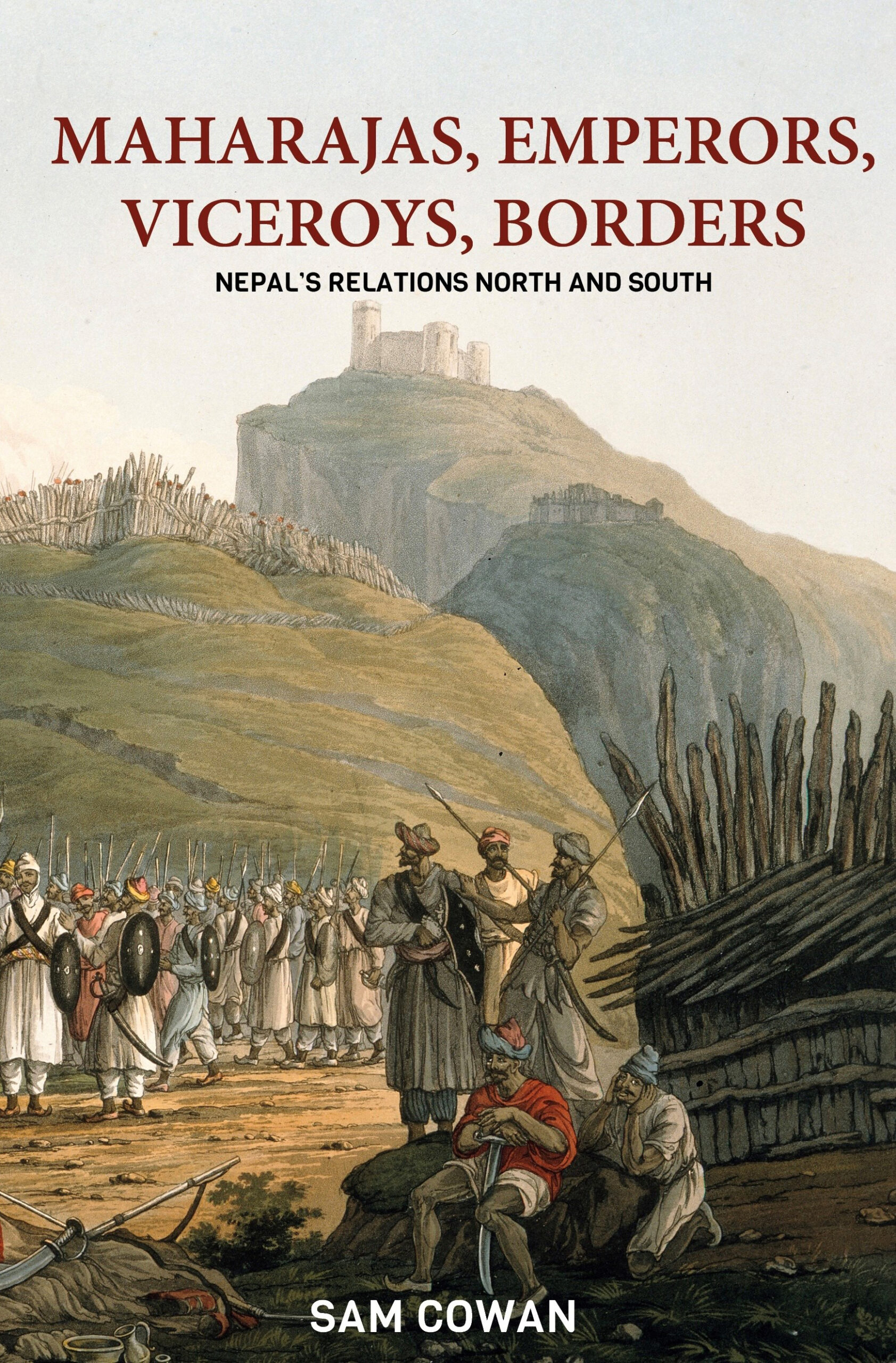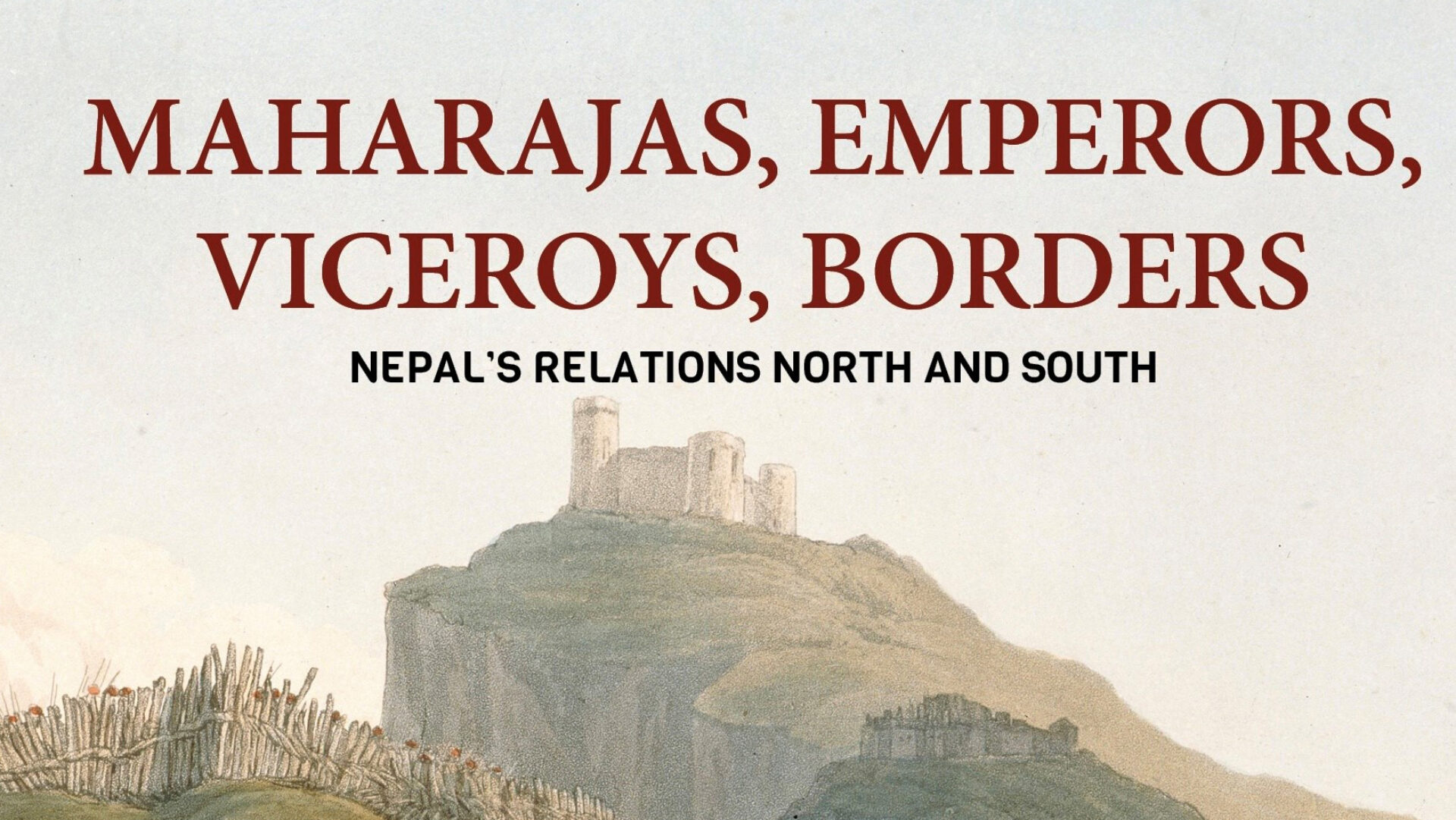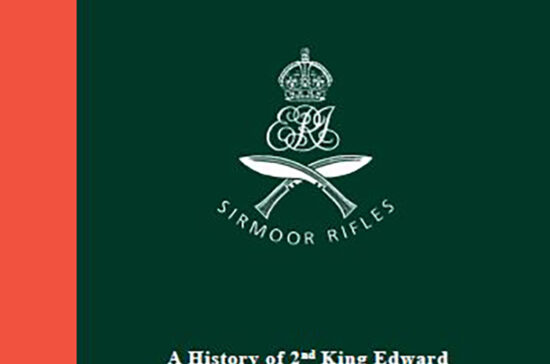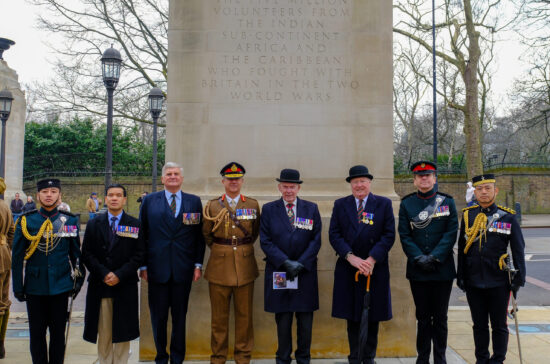
Maharajas, Emperors, Viceroys, Borders - Nepal’s Relations North and South - By Sam Cowan
A glance at the shelves of any bookshop will reveal acres of books about Gurkhas, those hardy warriors from Nepal who have soldiered for Britain for over 200 years. The books will be full of daring do, battles, campaigns and Victoria Crosses, but there will be very little about how the British/Gurkha relationship came about. It is perhaps unsurprising that the story of the Anglo Nepal War of 1814 -1816 has escaped the notice of the British public then and now, for when it started Wellington was chasing Marshal Soult over the Pyrenees and when it ended most Englishmen were far more interested in the aftermath of the Battle of Waterloo, a mere couple of hours across the Channel, than what might be going on at the other end of the world. Up to now only Stiller’s The Rise of the House of Gorkha published in Kathmandu in 1973, and Pemble’s The Invasion of Nepal: John Company at War published by the OUP in 1971 have covered the war in any detail, and while a primary source Papers Respecting the Napaul War was published in two volumes by order of the Court of Proprietors of East India Stock in 1824, the print run was small and the volumes are not easy to come by.
Now all that has changed, for in Sam Cowan’s latest book he reveals much about the war that was hitherto unknown. It would be unjust to compare Sam Cowan with a terrier, for he is far from being short and yappy, but in the way in which he cuts through obfuscation and propaganda to get at the truth he is unrelenting. It is unlikely that even the most assiduous student of the history of Nepal – where Gurkhas are of course a minority – would be aware of the machinations of the Nepal Durbar to inveigle the support of the Chinese Empire to overturn the results of the war (the transfer of the conquered territory of Kumaon to the Company). Nor would they be aware of the relevance of the Treaty of Segauli, which ended the war, to the present-day bitter border dispute between India and Nepal over who owns a large area of land, known as Limpiyadhura, to the west of Lipu Lekh. Cowan produces incontrovertible evidence that it is Indian. This scholarly but immensely readable book (and the two are not always synonymous) deals not only with the Anglo Nepal War. We learn of the difficulties in persuading the hereditary prime ministers to allow recruiting to take place inside Nepal, of the hilarious attempts by Sir Kaiser Shumshere Jung Bahadur Rana, appointed a knight of the most excellent order of the British Empire (KBE), to persuade Garrards of London to make him an extra-large star of the order to wear on his left breast, as he thought the regulation one was not sufficiently impressive – a request soon quashed by the chancellery of the order. We learn of tea parties and discussions with the rulers of Tibet, of the attempts to provide Nepal with a modern democratic constitution and about King Mahendra’s coup in 1960. Being a true friend of Nepal, as Cowan is, does not mean unconditional support for all that happens there, and there will be those in power in Nepal who will not like some of Cowan’s conclusions, but the arguments that he makes, particularly in regard to the current border dispute, are unarguable, supported as they are by hard evidence.
Sam Cowan probably knows more about Nepal, its history, its terrain, its people and its politics than anyone in UK now alive. His interest and love for the people of Nepal was sparked by his first posting as a young officer of Gurkha Signals (later Queen’s Gurkha Signals) and in his outstanding military progress from second lieutenant to full general he never lost his empathy with all things Nepali. As Colonel Commandant of the Brigade of Gurkhas it fell to him to transform the Brigade from an imperial gendarmerie to an essential element of the modern British army, and this reviewer well recalls when General Cowan would sit down on a grass bank on some remote British training area and regale, in Nepali, a group of young Gurkha recruits about what he had found in his latest trek in the hills of their homeland. Well-illustrated and with all relevant maps, this valuable contribution to the geopolitical history of Nepal should be compulsory reading for every British officer in Gurkha units, and for anyone interested in the history of this fascinating mountain nation.
Review by JGH Corrigan MBE FRHistS (late The Royal Gurkha Rifles)
The author has gifted a limited number of signed hardback copies to the Gurkha Museum. The cost is £20 with every penny going to the Museum appeal.
Fine Print Publishers, Bishalbasti Ka, Bishalnagar, Kathmandu, 2024. IBSN 9798876489463. Available from Amazon at £15.99 (paperback) or from bookstores in Kathmandu at NCR 990 (hardback). A Kindle version is on offer at £8.07.





